Ai Weiwei, the artist, the philosopher and the rebel
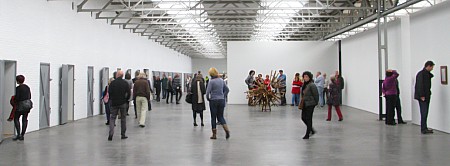
Ai Weiwei,
the artist, the philosopher and the rebel
Museum De Pont until june 24, 2012
Ai Weiwei (1957) is an artist, a philosopher and a rebel. It runs in the family. His father was a writer and a poet who was forced to live in exile in a labor camp for over 16 years. Ai Weiwei received his education in China and lived in the USA from 1981 to 1993. When his father became ill he returned to China. His art is multifacated and a challenge for our associative talents. He currently has a very inspiring show at Museum de Pont which is on view through 24 June.
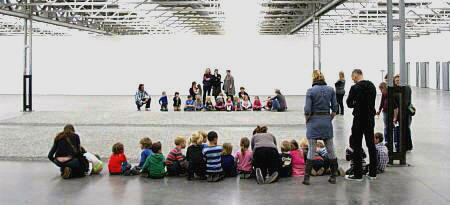
Ai Weiwei’s art is about China, but his art is not the Chinese art that became popular during the late eighties and the nineties, with the cynical and caricatural paintings by for instance Fan Lijun and Yue Minjun, colorful paintings, crowded with bald headed, smiling, blunted figures. Ai Weiwei is not a painter, he has embraced the concept that art can be expressed in any way or form. In some of his videos he uses today’s reality in China as a ready-made, like Duchamp and Warhol before him, a registration of reality as it is, only ‘manipulated’ by the choice of subject.
Beijing is a 150 hour film of a 2400 km taxi drive, crossing a district of Beijing. The film shows a public space dominated by inanimate architecture, by motorways and cars, a view not different from any modern western city. The Chinese ornament hanging down from the cab’s rear mirror questions the scarce presence of remainders of traditional Chinese culture and architecture.
The Second Ring is a 66 minute film taken from the 33 bridges that cross the second ring in Beijing, 1 minute of film in each direction. It is an objective depiction of this fragment of reality without any explicit comment. The film leaves any questioning or commenting to us, to the viewer.
I’m not an analyst, my art is intuitive, of course I have put certain ideas into the works but they may not be the most important aspect. That is for other people to decide.
His art is Chinese, he acknowledges the skills, the craftsmanship of the Chinese cultural tradition, works of art from the past reflect as he puts it: the morality, the aesthetics and the philosophy of its time. He uses elements of this tradition and connects them to contemporary social-political issues, for instance by reconstructing trees as if museums are becoming the only save havens for conserving nature, just as they are for conserving important art. The Forever-bicycles sculpture integrates ready-mades into a carousel or is it a treadmill, it seems a metaphor for the absence of a strong believe in individuality in Chinese culture. And in his most famous work, the hundreds of thousands of painted sunflower seeds, Ai Weiwei suggests a modern form of slavery, a contemporary form in which the western 17/18th century Chine de Commande porcelain has been replaced by shirts, shorts and shoes.
Ai Weiwei’s Fountain of Light is a Chinese version of Tatlin’s Monument to the Third International, a symbol of modernity and a tribute to the Bolshewik Revolution of 1917. Weiwei’s monstrous sculpture addresses the audacity, the self-glorification of ideologies and the complete absence of any appropriate humility.
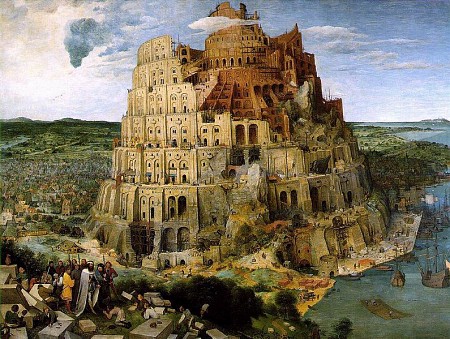
Pieter Breughel, Tower of Babel
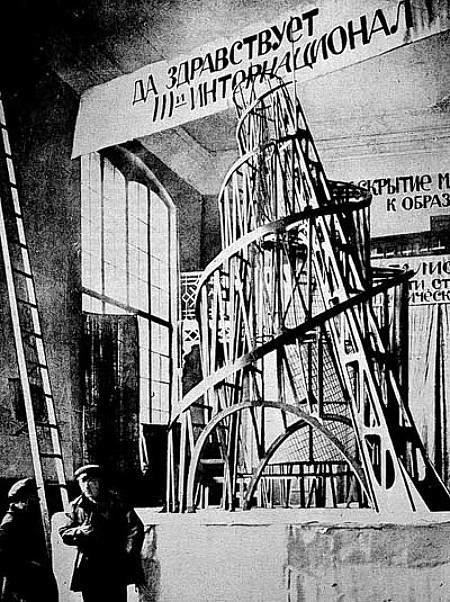
Model of Tatlin’s Monument
Fountain of Light (at Museum De Pont)
Text & photos: Anton K.
De Pont museum of contemporary art:
Ai Weiwei until 24 June 2012
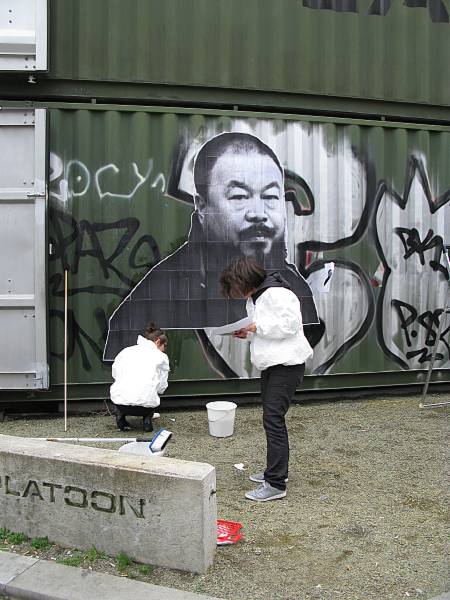
Berlin, Linienstrasse, protest against Ai Weiwei’s arrest, April 2011
fleursdumal.nl magazine
More in: Ai Weiwei, Anton K. Photos & Observations, Exhibition Archive, REPRESSION OF WRITERS, JOURNALISTS & ARTISTS, Sculpture

